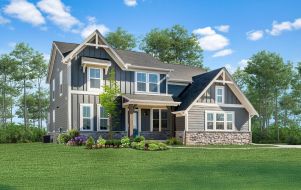Renovation vs. Remodeling in Interior Design Projects for Maximum Impact

In interior design, "renovation" and "remodeling" are often used interchangeably, yet they represent distinct processes catering to different needs and objectives. Whether you're looking to breathe new life into a space or completely transform its functionality and aesthetic, understanding these distinctions is crucial for achieving your desired outcome.
Defining Renovation and Remodeling
Refurbishing is redesigning or redoing a certain space without gross structural alterations. It tends to be concerned with the aesthetics, ergonomics, or relative utility of a given space. Generally, it entails applying new coats of paint, flooring, lighting, and fixtures alongside minor adjustments in the structure.
On the other end, remodeling involves more profound transformations that affect an area's structural, spatial-functional organization. This often entails removing walls or partitions, designing a new layout, and rebuilding the structure. Minor construction projects may involve erasing partitions to obtain an open floor plan, gaining or losing a room, changing the usage of space, for example, for a garage to home office conversion, or implementing sophisticated renovations involving mechanics such as plumbing, electrical, and the like.
Factors Influencing the Choice
Several factors, including budget, goals, timeline, and the condition of the existing space, influence the decision to renovate or remodel. Renovations are generally more cost-effective and less disruptive, making them suitable for homeowners who want to update their interiors without undertaking major construction work. Renovations are also quicker to complete, often allowing homeowners to enjoy the refreshed space within a relatively short timeframe.
Remodeling, on the other hand, is chosen when homeowners seek to change their homes' layout or functionality fundamentally. This could be driven by expanding living space, improving flow and usability, accommodating changing lifestyle needs, or increasing the home's value through significant upgrades. While remodeling projects are typically more expensive and time-consuming, they offer the opportunity to customize and modernize a home to suit the owner's preferences and lifestyle better.
Considerations for Homeowners
Before embarking on a renovation or remodeling project, homeowners should carefully consider their objectives and consult professionals to determine the most appropriate approach. A renovation may suffice if the goal is to update aesthetics or enhance functionality within the existing framework. However, if the aim is to create a more substantial transformation, such as altering room layouts or improving overall property value, a remodeling project may be necessary.
Trends and Innovations
Modern trends in new construction have shaped the concepts of renovation and remodeling, which include factors such as sustainability, smart home technologies, and minimalism. People are using environmentally sound materials, energy-efficient gadgets and devices that make life easier, and greener systems that make homes smarter and more efficient.
Also, integrating better design software and virtual reality technologies has boosted efficiency in planning and visualization in renovations and remodeling projects. These technologies help the homeowner and designers try out possible layouts, material choices, and various finishes on the actual house before committing to them, which may lead to costly mistakes.
In conclusion, it can be stated that although the renovation and remodeling process has several differences in terms of their aims for the interior design process, they are both essential in changing and developing the spaces according to the latest demands and expectations of the clients. Through comprehending the distinctions between renovation and remodeling, homeowners are equipped with the knowledge to evaluate their goals and means before beginning interior design undertakings that will be fruitful and gratifying. Whether opting for a simple refresh or a comprehensive overhaul, the ultimate goal remains: to transform living space into a more personal appearance that will complement improved functions and quality of life.
Related Article : Top 10 Must-Have Luxurious Investments for Your Living Room











